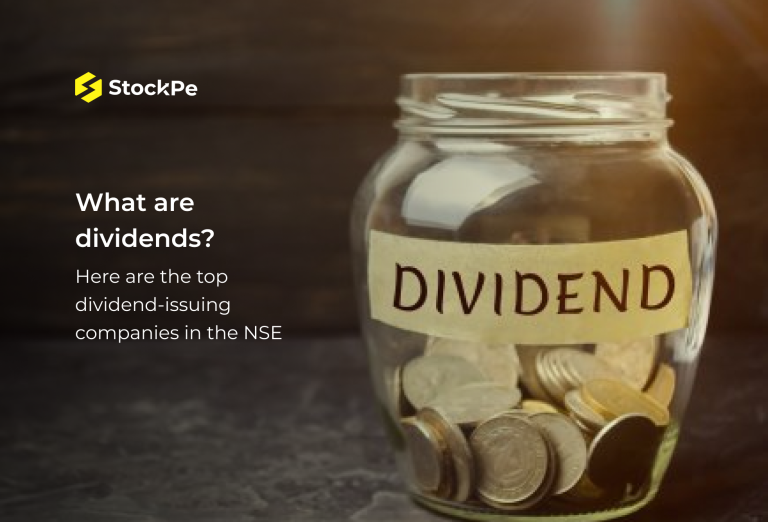Small-cap stocks are business shares with market value ranging from $250 million to $2 billion. But why and how is it crucial for investors?
Most of the small-cap companies are new-generation companies with good growth prospects. For those interested in discovering the large-cap stocks of the future, investing in small-cap stocks may be the opportunity of a lifetime! However, while the stocks of these firms have the possibility of earning large returns, they carry high risk and high volatility.
This article includes all the details of small-cap stocks that an investor may need.
What is a small-cap stock?
As stated, small-cap stocks refer to companies with a total market capitalization of between $250 million and $2 billion. They are the stocks of companies that are trying to grow rapidly or are engaged in specialized markets. These firms also may not be as well-known as the ones with higher market capitalizations. However, they may provide a high growth potential.
This is because most of them are –
- Relatively small in size
- Better position to adapt to market forces
An example of the above could be –
Apple, Microsoft, and Nvidia are the top firms with the highest market caps. But how many do you know of say Accel or Shakti Pumps to name a few? Also, if we look back, Netflix is live proof of how small caps could be the larger ones of the future!
Positioning small-cap stocks –
Small-cap stocks are mostly assumed to be connected with new companies. However, they can also be profitable companies with more stable business concepts. They are less covered by brokers compared to large-cap firms. Thus, are also less recognized in the investing world.
The lack of visibility can result in stocks being underestimated. This gives investors a chance to buy such stocks at a cheaper price.
Small-Cap Stocks vs. Large-Cap Stocks
The essential distinction between small-cap and large-cap stocks is based on market capitalization and growth capabilities. Here are the differences between the two:
| Factor | Large-cap Stocks | Small-cap Stocks |
| Market cap | Over $10 billion | $250 million to $2 billion |
| Risk | Lower risk and more stable | Higher risk with more volatility |
| Growth | Lower growth potential | Higher growth potential |
| Dividend Payments | Regular, stable payouts | Less likely to offer dividends |
| Liquidity | Highly liquid, easily traded | Lower liquidity, fewer shares traded daily |
Small-Cap Stocks vs. Mid-Cap Stocks
Here are the key differences between small-cap and mid-cap stocks:
| Factor | Mid-cap Stocks | Small-cap Stocks |
| Market Cap | $2 billion to $10 billion | $250 million to $2 billion |
| Risk | Moderate risk | Higher risk |
| Volatility & Stability | Comparatively lower volatility and more stable than small-cap stocks | Highly volatile with less stability |
| Growth Potential & Investor Type | Moderate growth potential and suited for those seeking a balance between risk and reward | High growth potential and suited for investors willing to take higher risks for larger potential returns |
Small-Cap Stocks vs. Penny Stocks
Here are the key differences between small-cap stocks and penny stocks:
| Factors | Small-cap stocks | Penny stocks |
| Market cap | $250 million to $2 billion | Typically below $250 million |
| Volatility | Higher volatility, but not as extreme as penny stocks | Very high volatility |
| Liquidity | More liquid, generally traded on major exchanges | Often illiquid, primarily traded over-the-counter |
| Growth Potential | Higher growth potential, especially in emerging markets | Can have high growth potential but is very risky |
Advantages of Small-Cap Stocks:
- Growth Potential: Small-cap companies are usually still in their growth stage, so they can produce much higher returns than large-cap companies. If such companies grow successfully, investors could reap high capital gains.
- Lower Share Prices: Small-cap stocks have a comparatively lower price than large-cap and mid-cap stocks. This makes it possible for individual investors to diversify their portfolios.
- Diverse Industries: Small-cap stocks are present in almost all sectors. This allows investors to have a variety of opportunities to invest depending on their preferred fields and outlooks on the market.
- Less Popularity: Small-cap stocks generally need more coverage by large institutional buyers and analysts. This lack of coverage might mean that they are undervalued. Thus, they are only the preferred investment choice for those willing to do the research.
Disadvantages of Small-Cap Stocks:
- Volatility: Small-cap stocks experience high volatility. Some may even experience sharp changes in prices in the stock market within a very short duration. This leads to higher risks for investors because the stock prices could experience a sudden increase or decline.
- High Risk: These stocks demonstrate higher risk. These companies mostly do not have many reserves for financing and may face severe fluctuations in the market.
- Limited Information: Small-cap companies are covered less actively by analysts and financial institutions. This makes it hard for investors to gather all the requisite information themselves.
- Low Liquidity: Small-cap stocks may imply that few shares are traded daily. Thus, getting out of a position without moving the price is practically difficult.
Conclusion
Small-cap stocks can be considered a rather active segment of the stock market with significant growth opportunities. These stocks can be an attractive investment opportunity due to their growth potential. Thus, it is essential to understand ‘what is small cap stock’ and know the associated risks and volatility.
One must be very cautious while investing in small-cap stocks because they involve high risks and need a robust strategy for investment. It is through research and possibly exploring the small-cap-focused funds that investors can be prepared for the returns that come with such stocks.
FAQs
1. Is investing in small-cap stocks wise?
Yes, small-cap stocks are highly desirable investments because they have the potential to grow at significant rates. However, they are not as stable and safe as large-cap stocks, Thus, they require investor analysis before investing.
2. Which way is preferable, small-cap or mid-cap?
Small-cap and mid-cap stocks, while not ideal for everyone, have their respective advantages. Small-cap stocks can offer higher growth potential but involve greater risk. In contrast, mid-cap stocks provide a balance of stability and growth potential. The final choice depends on the risk preference and investment objectives of the investor.
3. Is Small-Cap good for the long term?
Yes, small-cap stocks can be good for long-term investment if the stock has good fundamentals and is on the right growth trajectory. While the market is volatile in the short-run, such stocks may generate large returns for long-term investors willing to withstand stock market cycles.





